Digital clutter can be just as harmful as physical clutter. When used properly, email can be an incredibly effective communication tool. The fact is that most of today’s work can’t be accomplished without email. On the other hand, letting a large number of emails pile up or not having a system for organizing your email can really slow you down. Here’s how to manage your messages like a pro and organize your email accounts so that you can leverage your inbox to its full potential.
The Issues with Cluttered Email
Some people don’t mind having a crowded inbox. Having hundreds or even thousands of emails isn’t necessarily a problem - how much email slows you down depends on your organization system. Regardless, chances are you’re spending a lot of time on email and you could be spending that time on more important things. The McKinsey Global Institute found that an average employee spends 13 hours a week reading and responding to email. That’s by far the most time-consuming work activity at 28% of our work time. This equates to 650 hours a year spent on completely reactive, low-value work.
Even if you think disorganized email isn’t hindering you, there are downfalls to having a cluttered email that you may not even be aware of. Here are some of the common challenges associated with a disorganized email system.
- You use your inbox as a to-do list. Some people focus only on sorting emails that have a task associated with them. If you’re using your email inbox to prioritize your to-do list, then you may be missing out on the need (or opportunity) to focus on other, more strategic areas. There are probably a lot of proactive, important tasks that could make a big difference in your work. Instead of using your email inbox as a to-do list, transfer any associated tasks into a project or task management system that works for you, the way you work. This will help you to sort and prioritize tasks not just by urgency but also by the impact that they can have on your overall goals.
- You can feel out-of-control. There have been studies that prove having a degree of control over their lives makes people happier. Being overwhelmed by the sheer amount of email they receive can make people stressed - but having a consistent system where they actually process the emails helps people to feel in control. By determining what to do with email, people have more control and will feel naturally calmer and more productive.
- You’ll waste time and energy. This is one of the biggest reasons to keep an organized email inbox. The average number of legitimate email messages sent over the internet each day is 22.43 billion. On the other hand, nearly 85% of all emails are spam. So how do recipients determine which emails to open and read? The fact is that it takes a lot of time to browse emails and figure out what’s important, and then it takes even more time to find an item again once you need it. Any time you leave emails in your inbox and have to dig through them, you’re wasting valuable time that you could be spending on something more important. Save as much of your brain-power as you can for more critical tasks.
- Key tasks and communications can fall through the cracks. Perhaps one of the scarier aspects of email organization is the opportunity for error. This is particularly true in client-facing roles where you need to communicate quickly and effectively. Email should coincide with your CRM system so that client communications are always up to date and properly stored. Having a strong organization system will help you to process your most crucial emails faster and manage overall customer relationships better.
Every email provider is different, and the best way to organize accounts will vary. The most common providers are Gmail and Outlook. Follow these tips to make the most of each type of inbox.
Related Post: How To Cope With Email Overload
10 Tips for Managing Gmail Accounts
Many people like Gmail because it can be more of a collaboration and productivity tool rather than just an email platform. For that to be true, it’s important to implement some organization elements.
- Use the options available to get more relevant emails at the top. Google gives you five options for organizing email:
Default - This is the everyday layout, where the emails appear in the order in which they arrive.
Important first - Google will use it’s own prediction to determine which emails matter most to you. They’ll be placed at the top with a yellow marker and everything else falls below them.
Unread first - This setting displays unread emails above others. This is helpful if you’re reading the read/unread as a to-do list.
Starred first - You may want to use stars to prioritize your inbox, and in these cases those emails will appear on top of any others.
Priority inbox - Google has the ability to learn which type of emails you interact with the most, and will put them at the top of your inbox. This is a nice setup for people who deal with a lot of different email every day. - Get rid of the tabs you don’t use. You don’t need to have tabs present if you don’t use them. The only one that needs to be present is the Primary tab. If there are tabs that don’t receive any messages, you can delete them in the Settings menu.
- Use labels to organize efficiently. Labels can be really helpful. Similar to tags, you can add them to any emails that you send or receive. You can also add more than one label to any email. Plus, you can add colors to labels for sorting at a visual level. You can also have Gmail apply labels automatically to save the manual work.
- Use other features for internal conversations. Google offers a lot of functionality that can facilitate communication between internal teams. Rather than beginning a long email chain, try using Note or Chat to communicate.
- Archive emails you won’t use in the near future. Do you ever hang onto an email because you might need it someday (only to never use it)? Archiving won’t delete an email but simply save it for later, and keep items searchable so you can always find them again.
- Use filters for common actions. Gmail allows you to filter emails by subject, sender, recipient, content, and more. Then you can tell Gmail what to do with them (whether you want to label, set a priority, etc).
- Turn on Nudges. Due to the amount of email we all get, it’s easy to miss messages that are actually important. The Nudge is an algorithm in Gmail that brings emails back to the top of your inbox when a reply hasn’t been sent by you or a recipient. This can be really helpful for follow-ups and reminders.
- Star important messages. The Gmail algorithm is pretty sophisticated and can usually tell which emails are important. In order to be really sure, though, you should star your most important exchanges. If you tag important messages yourself, the algorithm will work even better. Starring messages is one of the easiest ways to tell Gmail what’s important to you.
- Mute conversations that you don’t care about. Do you ever get stuck in conversations between co-workers that don’t really involve you? You can use the “Mute Conversations” feature in order to not see any further emails in your inbox. Any emails added to the conversation will be stored and still be searchable in your inbox, but they won’t take up real estate at the top of your inbox.
- Use Gmail’s Smart Reply or Smart Compose options. This functionality shows suggested replies with short phrases based on the content of the email you received.You can turn this on from the General Settings tab. This is really helpful for sending quick replies.
Related Post: How to Manage Multiple Gmail Accounts
5 Tips for Managing Outlook Accounts
Having a clean and easy-to-navigate email inbox is more likely than ever with the new features from Outlook 365. Many people overlook these features, but using them can help you to achieve the elusive “inbox zero”.
- Have “to do” and “follow up” folders - and use them. You should create a structure of folders to organize incoming email. Create new folders under your inbox folder, including a “To Do” folder (we suggest creating two more folders under that one, one for “follow up” and one for “someday”). As soon as new emails arrive, move them to the appropriate folder.
- Use the task list instead of cluttering your inbox. Even if something doesn’t require an immediate response, you may want to set a reminder to complete the associated tasks at some point. Drag the email and drop it on Outlook’s task list icon, then add a due date and set a date and time to receive a reminder. Save the task.Once the task is complete, make sure to mark it so that it drops off of your list.
- Try the Clean-Up function. This feature allows users to drastically reduce the emails in their inbox in just one click. The clean-up function removes all email replies that are duplicated in a later thread, allowing you to read a single thread instead of dozens of individual emails. From inside your inbox, click the "Clean Up" button, and select "Clean Up Folder."
- Set rules to automatically sort emails. Every day your email inbox gets flooded with automatic notifications, spam, or irrelevant email threads that you don’t care about. Use Outlook’s rules function to automatically send those emails to where they should be (whether that’s trash or a different folder). You can also use rules to better prioritize emails as they come in. For example, you can set rules so that any message from your boss goes immediately into your to-do folder, or that emails from vendors go straight into a vendor folder that you created.
- Use Quick Steps. This is a more advanced feature, but it allows users to automatically perform long strings of actions based on a trigger. For example, if you’re responsible for managing invoices at the end of each month, Quick Steps can help you automate this process. If you normally review invoices and then forward them to your accountant and set a reminder to follow up the next week, the last two of those steps can be taken care of with Outlook. Click “Create New” in the Quick Steps section of the Home ribbon and set up a “forward” step. This will set up a workflow where these emails automatically go to the next recipient in the process. Then you can create a task with a due date and reminder.
Related Post: How to Manage Multiple Microsoft Outlook Accounts
Browser Extensions and Apps that Can Help With Email Organization
Though most email providers have become increasingly sophisticated with their own tools, there is a lot of technology available to improve things even further. Try some of these apps or Chrome extensions that can help you to improve email organization.
- Gmelius - This is a tool that can help with Gmail email functionality, but it can also be used as a full-fledged collaboration platform. It also offers a lot of email templates and automation that is helpful for people who send a lot of emails.
- Right Inbox for Gmail - This software allows users to set reminders and tasks from their inbox. It also offers automation and scheduling features and allows senders to create, save, and paste in a variety of different signatures.
- Mailtrack for Gmail - If you’re someone who sends a lot of email, it can be tricky to keep track of what happens once you’ve sent it. This extension uses a Gmail compatible tracking script that will show you if an email was opened or not, so you know how to set reminders effectively.
- Evernote for Gmail - Many people love Evernote, but don’t take advantage of their extension for Gmail. Using this system, you can easily save entire email conversations, or single emails, with just a few clicks.
- Inbox When Ready - This tool locks your inbox down for a scheduled period. Then you can focus on writing emails or reading important ones that you already received.
- Microsoft Outlook integrations - There are a variety of integrations that work well with Outlook and can improve both organization and productivity. Consider Microsoft Teams, Slack, Salesforce, or Asana. These organizational and collaboration tools can help you to streamline communications and projects and provide a central place for ongoing discussion and project management. They can support your efforts to put incoming emails in the right place and use them to further your most important work.
Related Post: The 10 Best Browser Extensions for Productivity
Managing Multiple Email Accounts with Shift
If you use multiple email accounts, it’s even harder to remain organized. Fortunately, there is technology that can help with this process.
Shift can streamline the process of switching between more than one email account login, which saves users from having to search for specific emails buried in a pile of open browser tabs or inside of several Gmail account logins. In fact, the ability to manage all of your accounts from one place is what makes Shift so unique.
Your primary Shift account has to be a Gmail, G Suite, or Outlook account but you can add as many other email addresses as you’d like, even from other platforms. Simply click on “Add Account” on the left of the page and then enter your email account and password.
How does it work? When you log into Shift for the first time, you’ll be asked to enter an email address, choose a color to identify that address, and then verify the information by putting in your password and completing two factor authentication (if required). If you’re already using Shift and want to add more email accounts, you can follow this guide. Once all your accounts are added, you'll see colored icons on the left column of your dashboard. Simply click on the icon of the address you want to use. We suggest using distinct profile pictures for each account to make your Gmail accounts easily recognizable.
Note that Shift supports Gmail, GSuite, Outlook, Office 365, Yahoo Mail, Apple Mail, and many other email providers. Learn more here about all of the communication and messaging apps available for integration in Shift.
Related Post: How to Manage Multiple Email Accounts










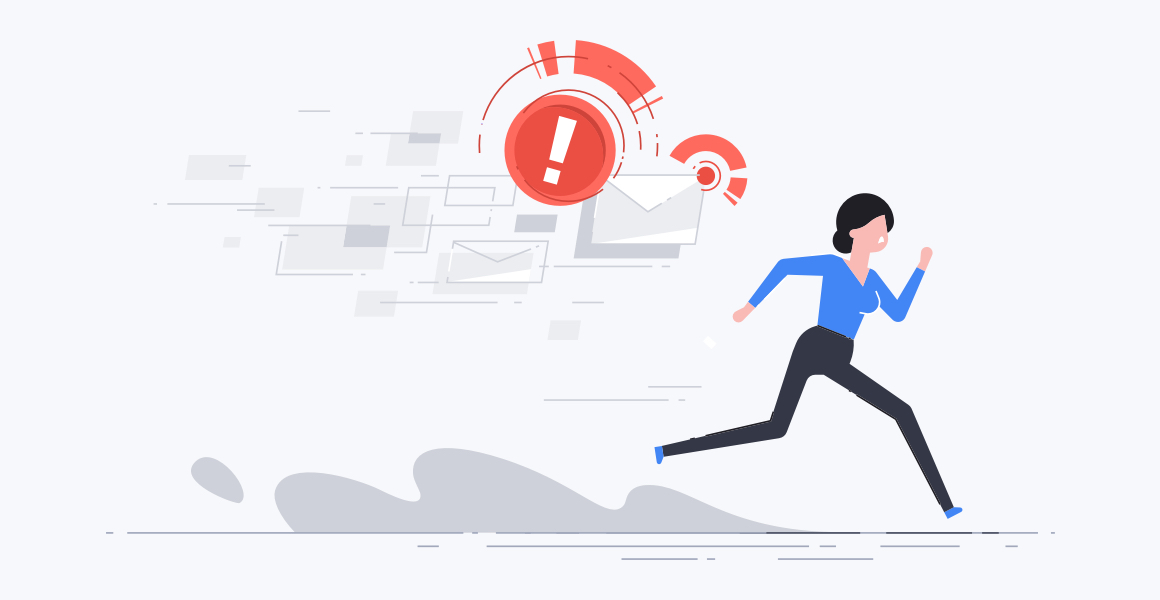
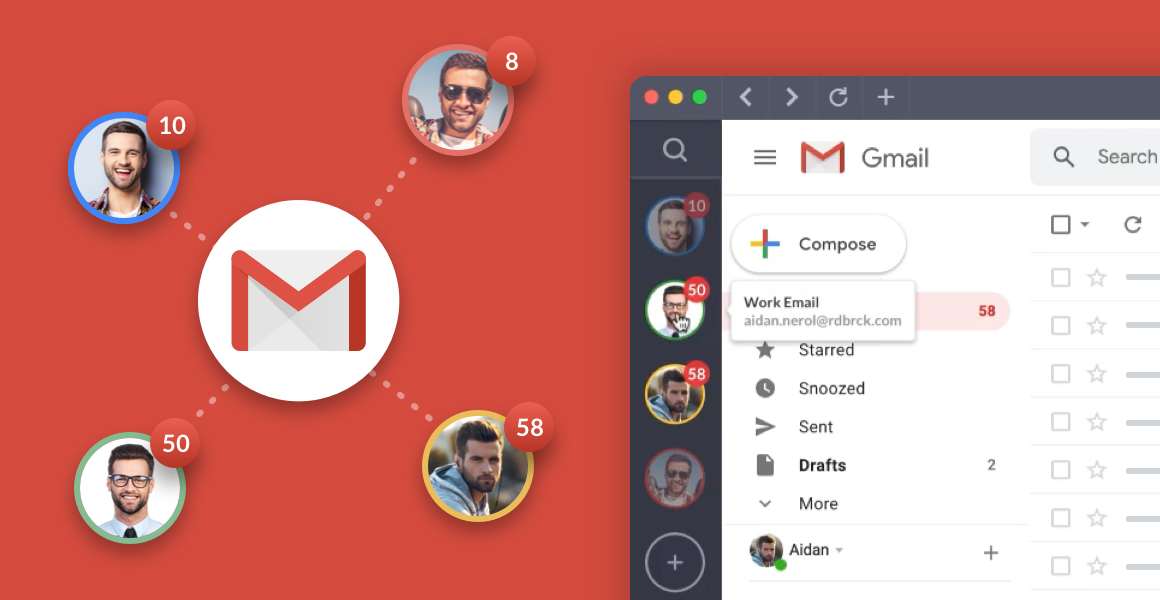
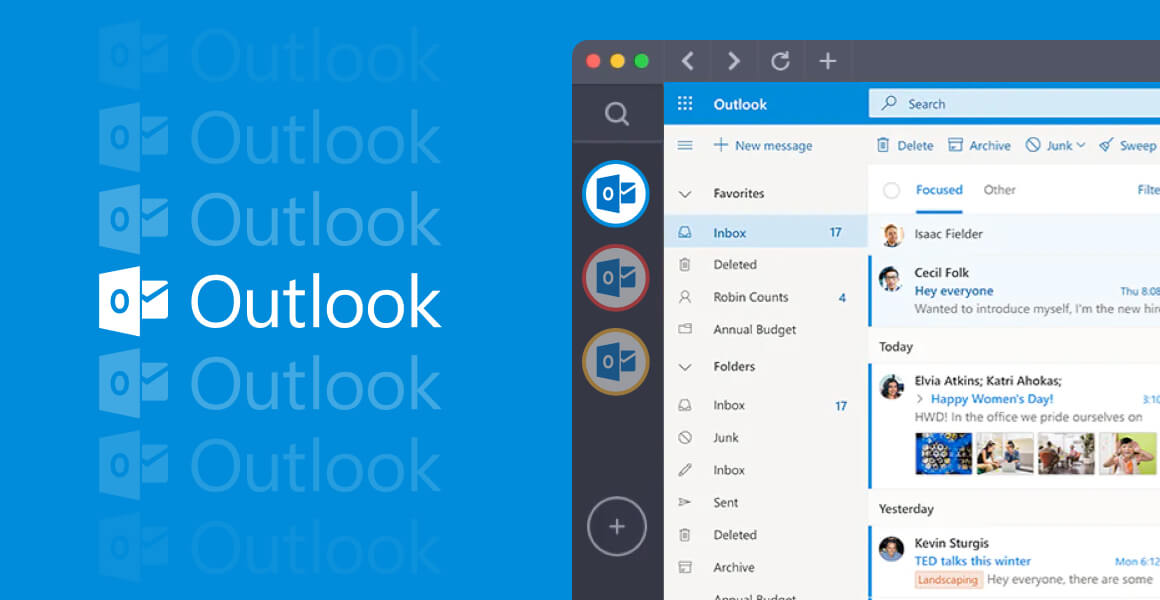
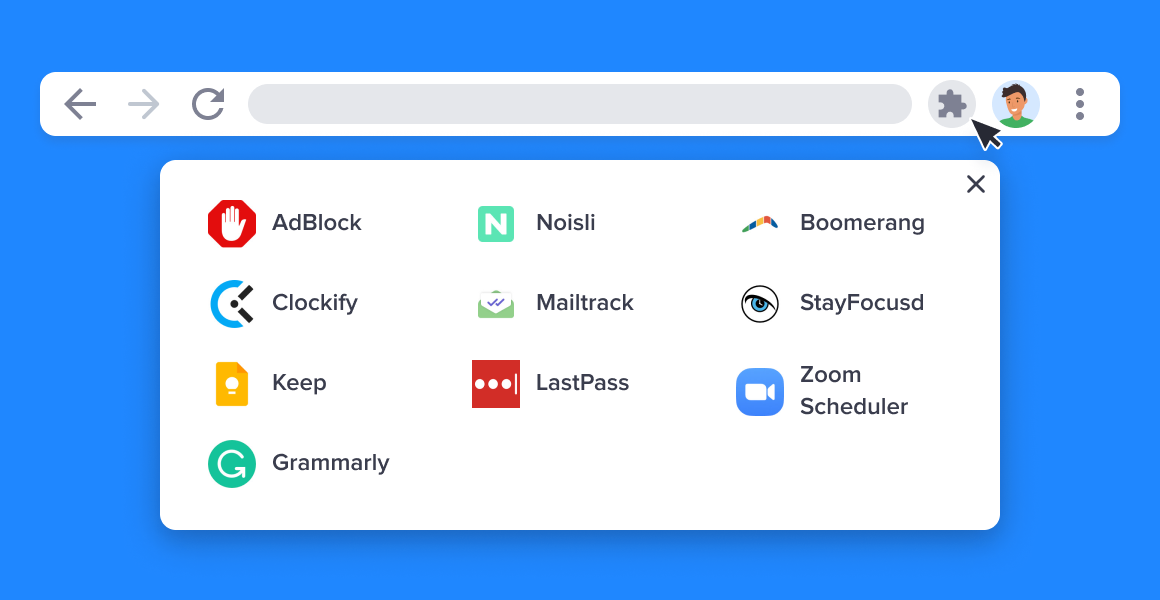
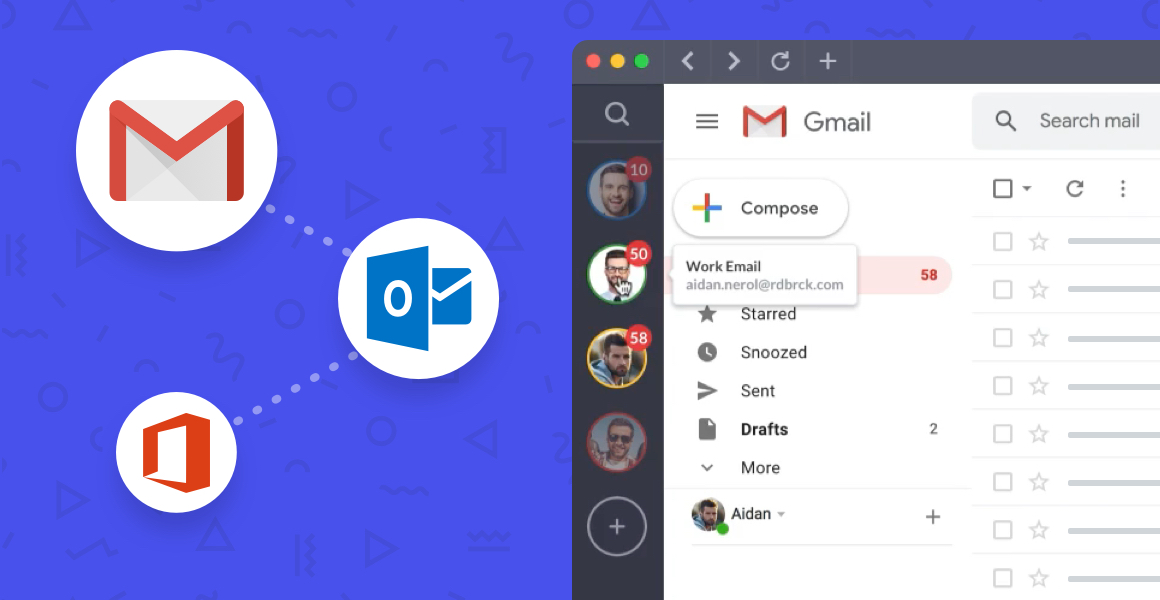





 Share on Facebook
Share on Facebook Share on Twitter
Share on Twitter







